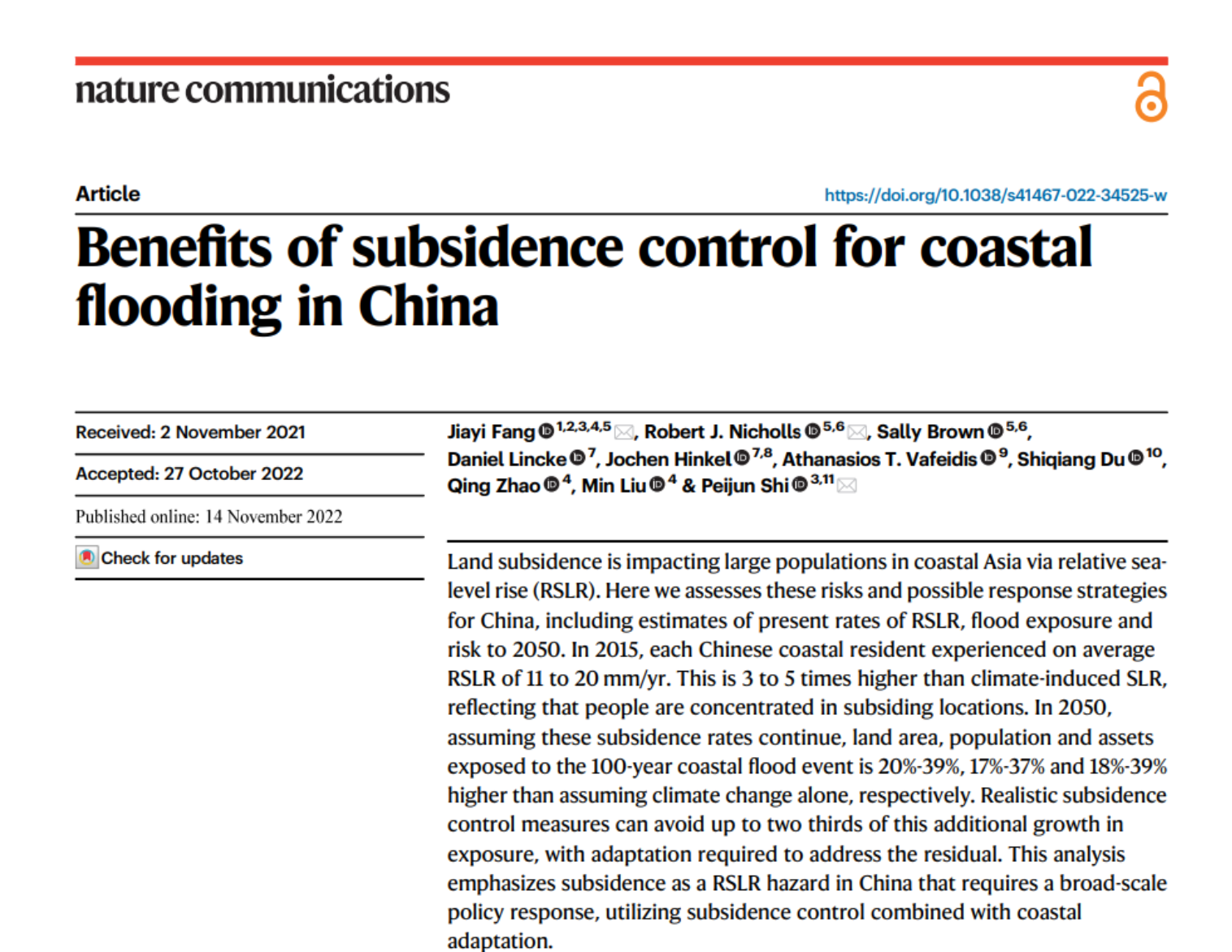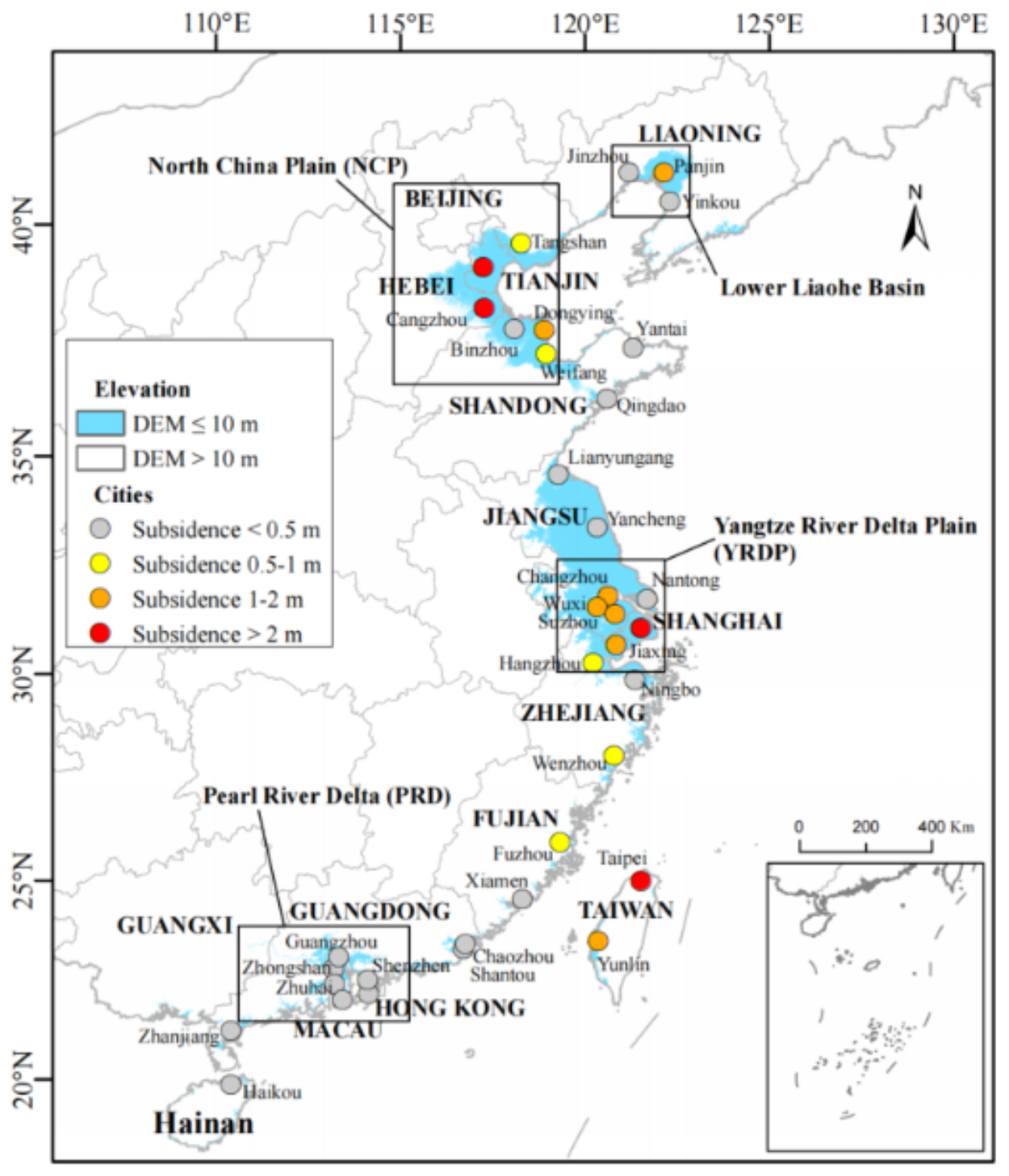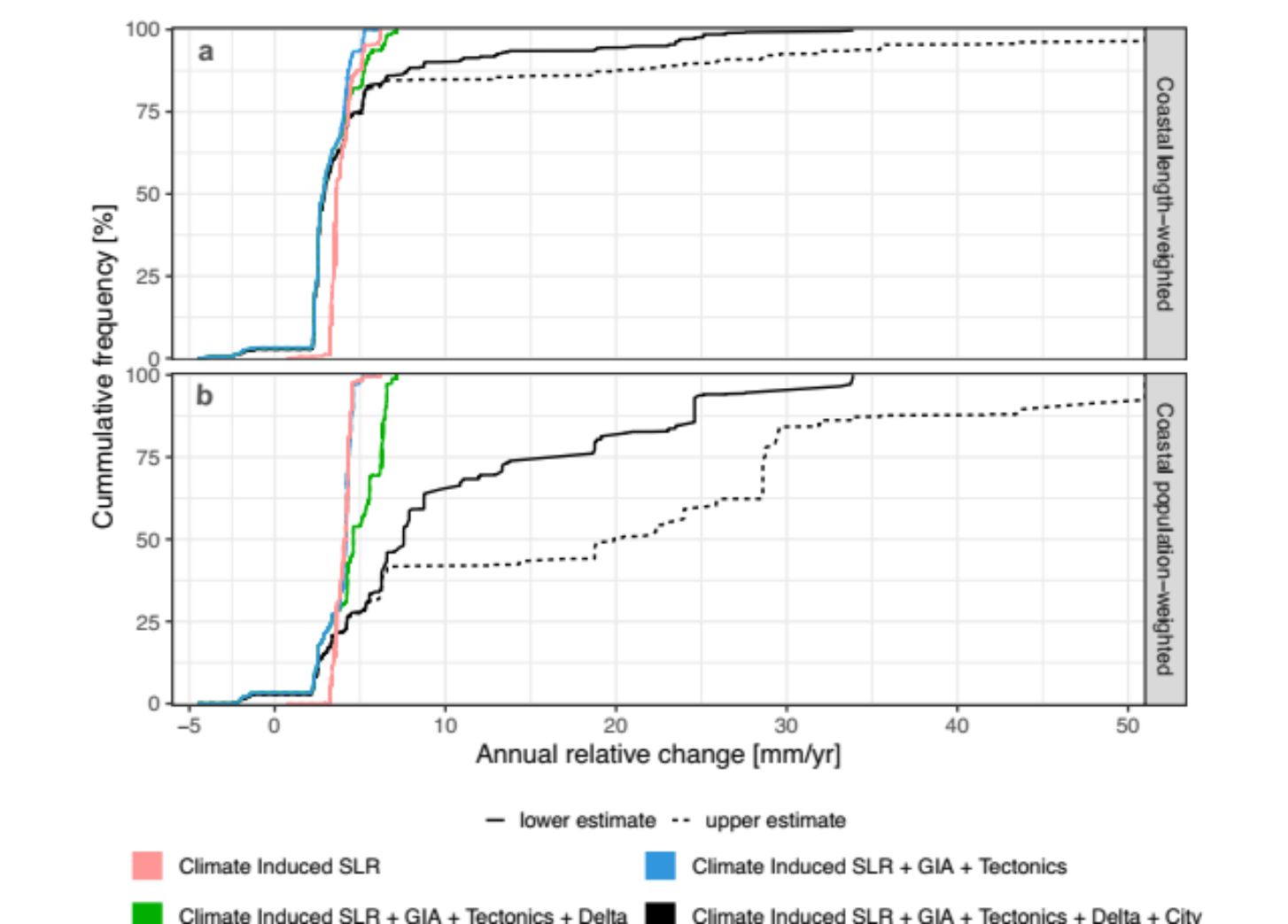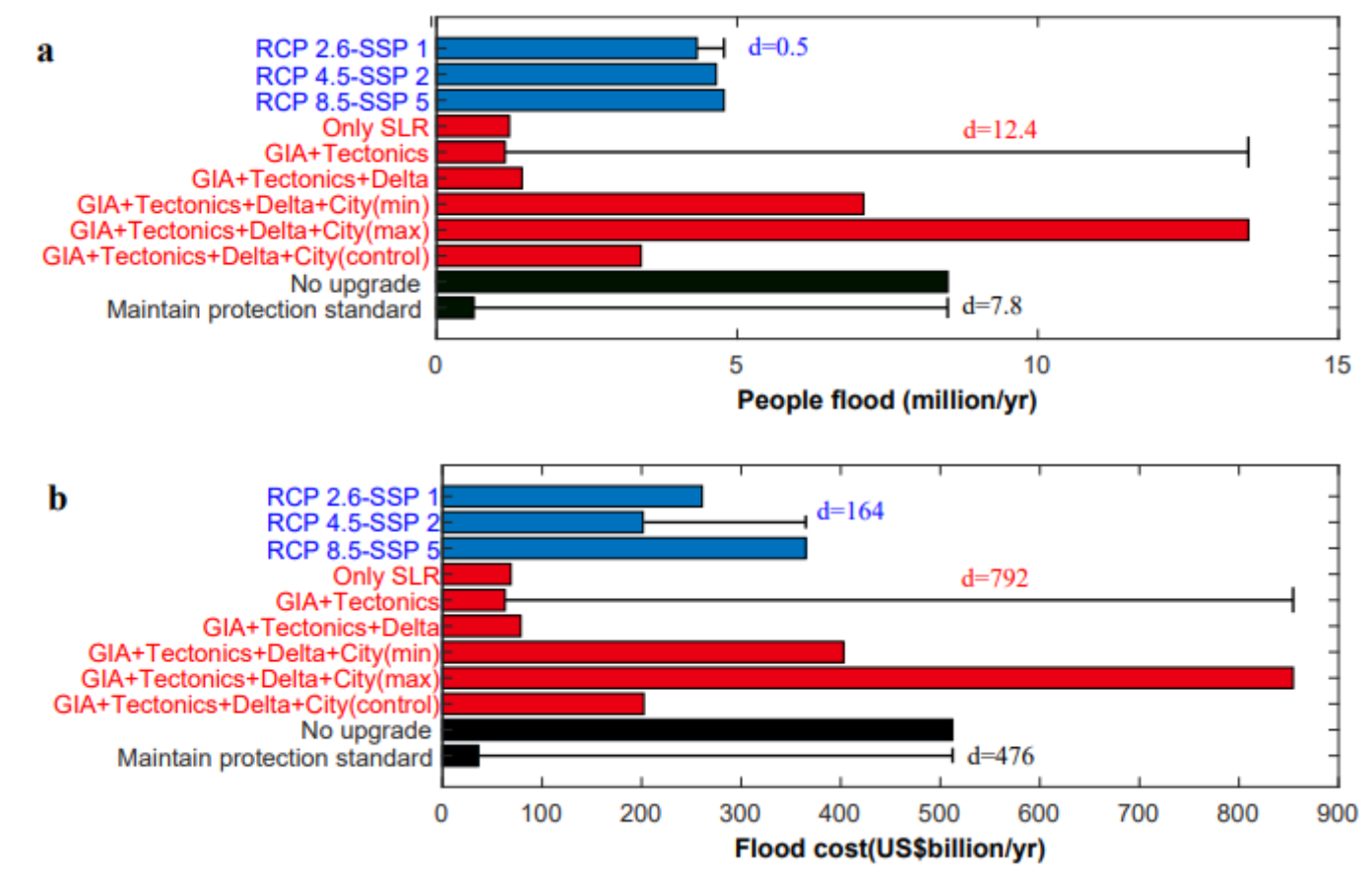BNU Professor Peijun Shi's team Publishes a Paper on Nature Communications to Reveal the Effectiveness of China's Land Subsidence Control Policies in Reducing Coastal Flooding risk
On November 14, the journal Nature Communications published online the latest research results by the team of Shi Peijun, professor of Faculty of Geographical Science at Beijing Normal University. And Fang Jiayi, associate professor of Geographical Sciences at Hangzhou Normal University is the lead author. this work quantitatively evaluates the effectiveness of china's land subsidence control policies in reducing coastal flooding risk.

Climate change brings great uncertainty to global coastal flood risk prevention. The additive effect of climate and non-climate factors amplifies the related effects, which has become the core scientific issue of the IPCC Sixth Assessment Report. Land subsidence combined with the relative sea level change caused by global sea level rise poses a great threat to the flood risk of coastal cities. It will cause a series of problems, such as building foundation sinking, house cracking, underground pipeline damage, flood and storm surge disaster intensification, and urban flood resistance capacity reduction. These problems are widespread, difficult to control and recover from, and have severely constrained the development of many coastal cities around the world, such as New Orleans, Bangkok, Jakarta, Shanghai and Tokyo. Several meters of land subsidence have been observed during the 20th and early 21st centuries.
China attaches great importance to the prevention and control of land subsidence. In order to contain the land subsidence and its negative effects, the Ministry of Land and Resources and the Ministry of Water Resources issued the National Plan for the Prevention and Control of Land Subsidence (2011-2020) in 2012, which summarized the situation of land subsidence and proposed the target of controlling the future subsidence in various key areas. However, the influence of land subsidence on relative sea level rise in our country and the effect of related control projects has not been evaluated effectively.
To this end, a large-scale coastal flood risk assessment model was constructed to quantitatively evaluate multiple climate change (RCP), socio-economic scenarios (SSP) and other indicators. Relative sea level change includes the sum of absolute sea level rise caused by climate change factors, glacial isostatic adjustment, vertical tectonic movement of land, natural subsidence caused by consolidation and man-made subsidence caused by underground fluid extraction. These driving factors are the basis of land subsidence scenario setting in this study. This study also focuses on the benefit of the policy of land subsidence control and the adaptive measure of coastal fortification level. The results show that, considering anthropogenic land subsidence, China's coastal residents face the impact of 11-20 mm/ year relative sea level rise (2015), which is 3-5 times higher than the absolute sea level rise caused by climate alone, reflecting the large concentration of coastal populations in the coastline with significant subsidence. Assuming unchecked future land subsidence, China's rate of relative sea level rise is 8.8 mm/year (2015-2050), which is 73 percent higher than that caused by climate alone. Meanwhile, the amount of land, population and assets exposed to a once-in-a-century coastal flood in 2050 is 20%-39%, 17%-37% and 18%-39% higher, respectively, than under the climate-only scenario. If coastal land subsidence is controlled in a timely manner, the relative sea-level rise rate will be reduced to 4.8 mm/year, corresponding to an increase in exposed land, population and assets of 7%, 6% and 7%, respectively, over the climate-only scenario. By the middle of the century, China will still face a rising risk of coastal flooding.
In contrast, land subsidence control will effectively reduce coastal flood losses to 22-47% of the original level. Combined with adaptive measures to continuously improve the level of fortification, China's coastal flood risk will be further reduced. At the same time, in all scenarios of coastal land subsidence in China, increasing the cost of levee is two orders of magnitude smaller than decreasing flood losses, suggesting that increasing the level of fortification is a cost-effective adaptive approach.
The main contribution of this study is to comprehensively understand the impacts of climate change factors and man-made factors (SSP scenario, fortification level and land subsidence) on coastal flood risk, and then to quantitatively evaluate the benefits brought by China's land subsidence prevention and control projects, and to confirm the contribution of China's existing fortification measures and land subsidence control projects to the prevention of future climate change risks. In the face of the increasing risk of sea level rise in the future, China's coastal flood control standard planning should continue to improve with the relative sea level rise to ensure the level of fortify, and continue to implement strong land subsidence prevention and control policies. This study provides an important reference for the delineation of high-risk coastal areas in China, the formulation of future climate change adaptation policies, and the realization of relevant United Nations Sustainable Development Goals.

Observed cumulative land subsidence in 36 coastal cities in China (since the 20th century)

Cumulative distribution of relative sea level changes along the coast of China

Sensitivity analysis to coastal flood risk
The first author of this paper is Fang Jiayi, Ph.D., Faculty of Geographic Sciences, Beijing Normal University (2018). Currently, he is an associate professor of Geography at Hangzhou Normal University. Dr. Fang's supervisor Professor Shi Peijun is one of the corresponding authors of this paper. One of the collaborators of this paper is Du Shiqiang, a 2013 PhD graduate of the Department of Geography, Beijing Normal University, and currently a professor at Shanghai Normal University.
Article Link:https://doi.org/10.1038/s41467-022-34525-w


